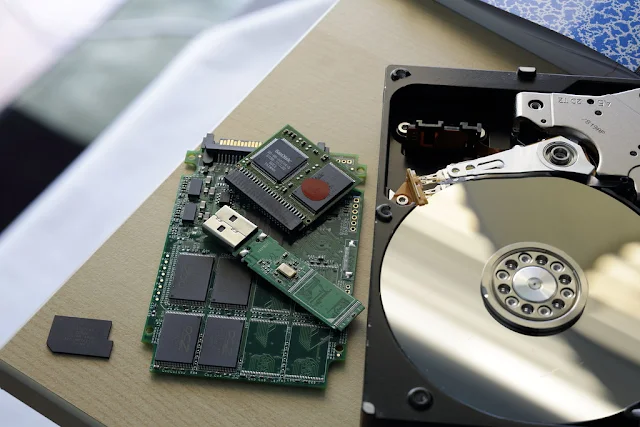Storage devices are a fundamental component of modern computing technology. Without them, it would be impossible to store and retrieve data on our computers, smartphones, and other digital devices. In this article, we will explore different types of storage devices, their features, and their advantages and disadvantages.
Types of Storage Devices:
There are two main types of storage devices: primary and secondary. Primary storage devices are volatile memory devices that are used to store data temporarily while the computer is running. Examples of primary storage devices include RAM (Random Access Memory) and cache memory.
Secondary storage devices, on the other hand, are non-volatile storage devices that are used to store data permanently. There are several types of secondary storage devices, including hard disk drives (HDDs), solid-state drives (SSDs), and optical storage devices.
Hard Disk Drives (HDDs):
HDDs have been the primary storage device for personal computers for decades. They use magnetic disks to store data, and they come in different sizes and capacities. One of the advantages of HDDs is their relatively low cost per gigabyte compared to other types of storage devices. However, they are also slower and more prone to failure due to their mechanical components.
Solid-State Drives (SSDs):
SSDs are becoming increasingly popular in the consumer market due to their faster read and write speeds and improved reliability. They use flash memory to store data, which means they have no moving parts. This makes them less prone to mechanical failure and allows them to consume less power. However, they are typically more expensive than HDDs.
Optical Storage Devices:
Optical storage devices use laser technology to read and write data on a disk. Examples of optical storage devices include CD-ROMs, DVDs, and Blu-ray discs. They are typically used for storing music, movies, and other types of multimedia content. Optical storage devices have become less common in recent years due to the increasing popularity of digital media.
Advantages and Disadvantages of Storage Devices:
Each type of storage device has its advantages and disadvantages. HDDs, for example, are relatively inexpensive, but they are slower and more prone to failure due to their mechanical components. SSDs are faster and more reliable, but they are typically more expensive. Optical storage devices are good for storing multimedia content, but they are becoming less common due to the increasing popularity of digital media.
When choosing a storage device, it is important to consider factors such as cost, capacity, speed, reliability, and compatibility with your computer or device. For example, if you need to store large amounts of data and don't mind sacrificing speed for affordability, an HDD may be the best option. If you need faster read and write speeds and don't mind paying more, an SSD may be a better choice.
Conclusion:
Storage devices are an essential component of modern computing technology. They allow us to store and retrieve data on our computers, smartphones, and other digital devices. There are different types of storage devices available, including HDDs, SSDs, and optical storage devices. Each type has its advantages and disadvantages, and choosing the right storage device depends on several factors, including cost, capacity, speed, reliability, and compatibility with your device. Ultimately, the choice of storage device will depend on your individual needs and preferences.

